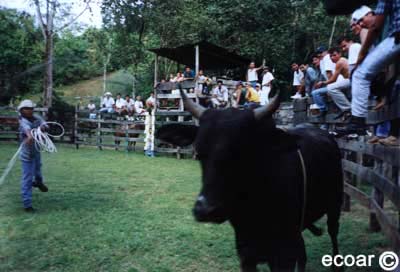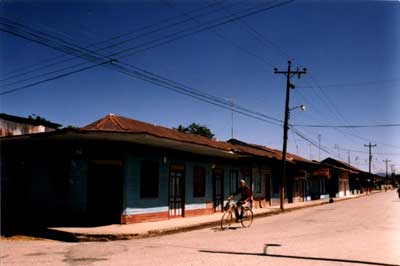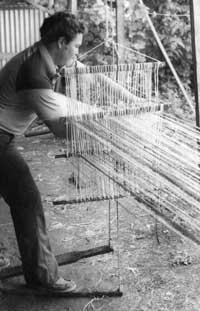Finceros
The new settlers, coming mainly from other parts of Costa Rica where spaniards had already establish, arrived only 50 years ago. The banana company had already developed extended plantations south, but the access of this region remain only by boat, or the trails of the mountains.


The forest was the first one to get the effects of the colonization.
The banana company chop down and drained vast valleys, supposedly to plant bananas, but the wood was worth fortunes..
The farmers started to slash and burn the mountains to have cows, they then realized that those pastures where not efficient for grazing. Corn and rice where first planted but the soils rapidly lost their nutrients.
Since the 80' we are seeing a reforestation, due to the numerous parks and reserves, and a change of the habitants.
Their cattle culture is kept alive by the "corridas", and cultural fairs.
The sugar cane process, seen as folkloric, as an attraction for the of revival of agriculture.The organic cultivation of flowers and fruits for export. Are positive solutions the country finds for it's development.


Left aside are the ghost tows of the company, with little left to do with a mono production of banana.
Some farms are still working, others left abandon, creating a ecological problem.
The conversion of some of theses tows into touristy cultural heritage is under way, as well as the protection of this typical architecture of the tropics.
Crafts are omnipresent in the culture. From simple household utensils to refine paintings.
There was the "cabulla", sisal fiber, to make the coffee bags and ropes.
The painted ox carts, with their colorful geometric designs.
The broidering of the chale, and sawing of patchwork blankets.
The skills learned from the aboriginals, to confection everyday tools with available materials.
